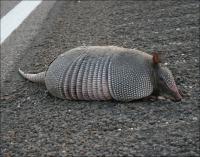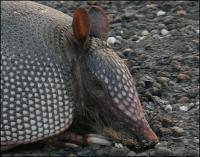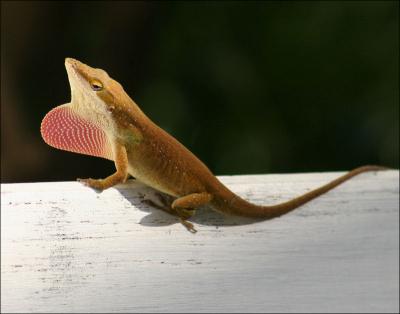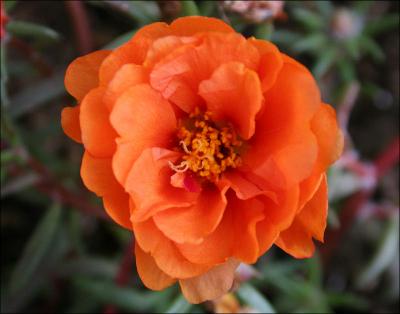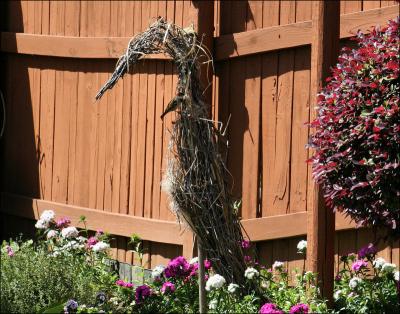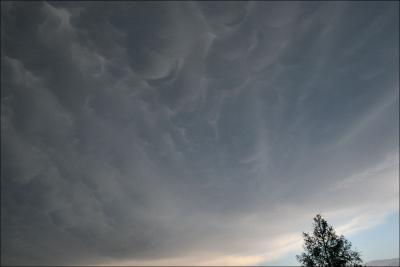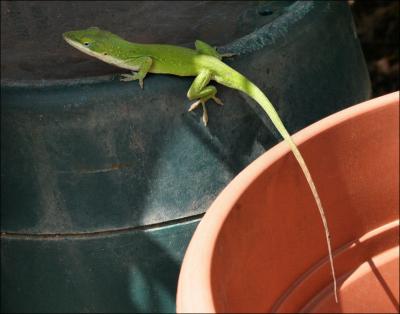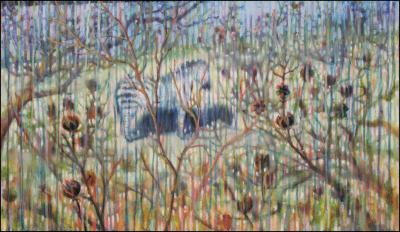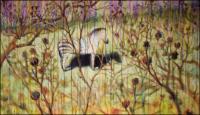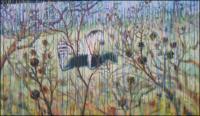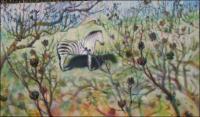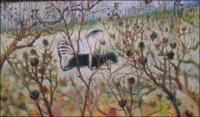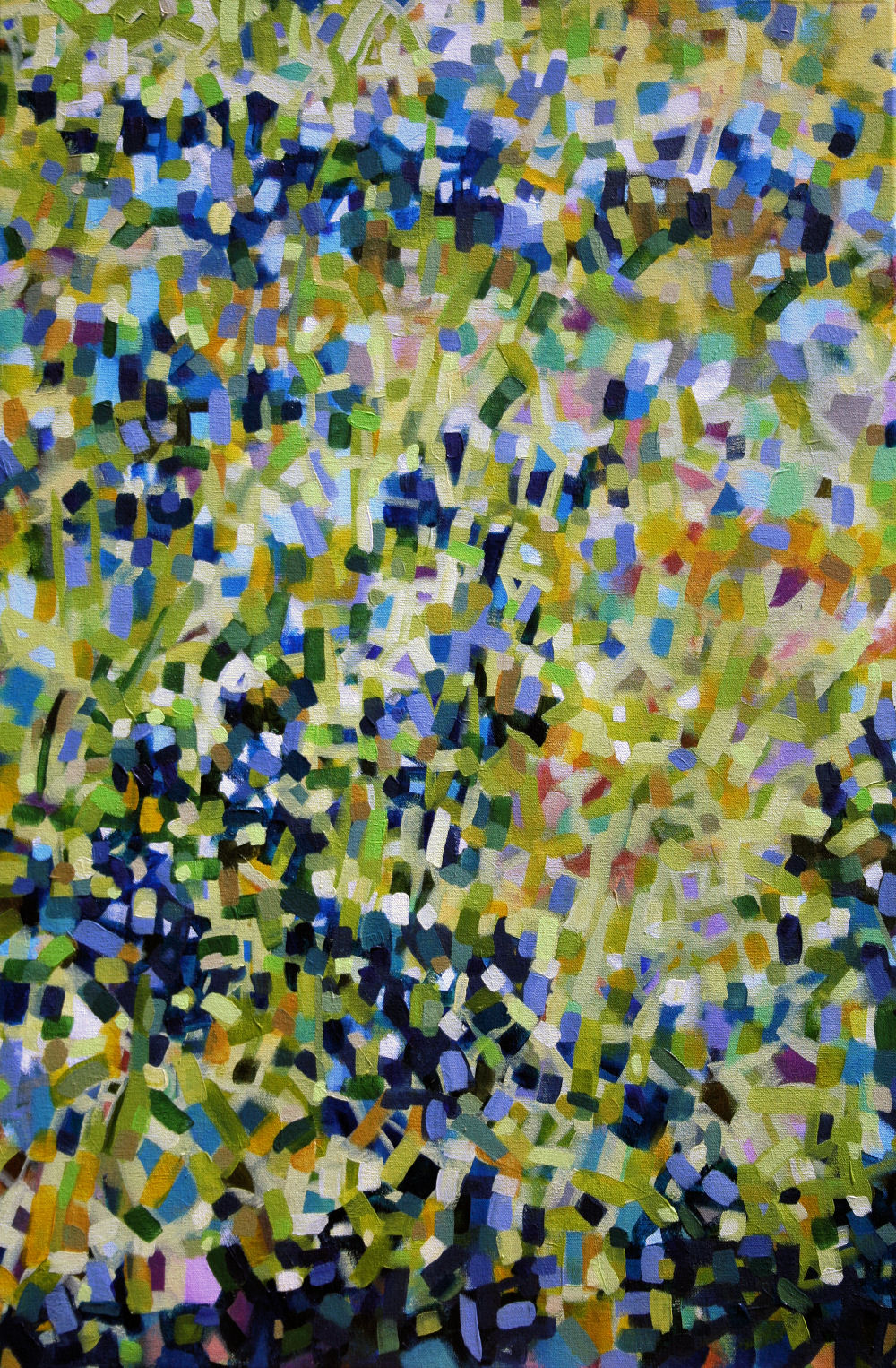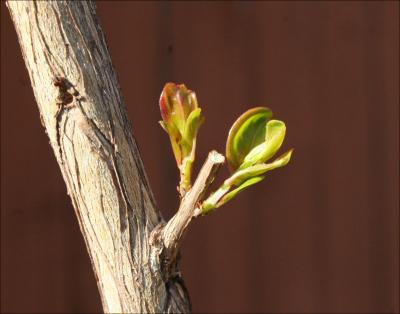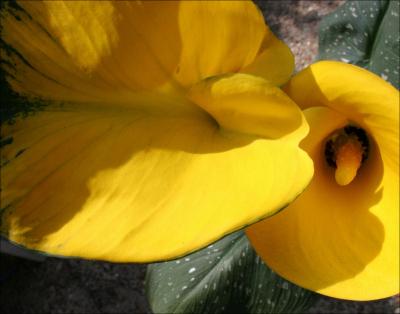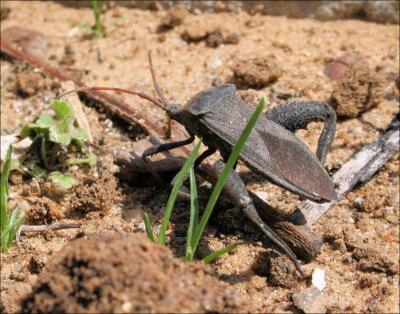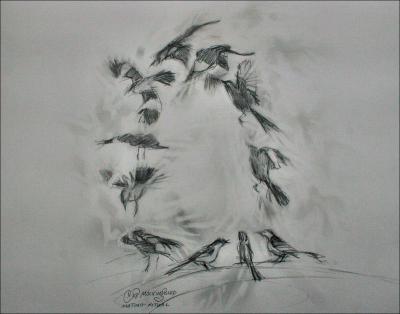Texas
« Previous Entries Next Entries »Armadillo
Sunday, May 4th, 2008
…a close look at the skin and overall design of an Armadillo who met misfortune near the Texas Motor Speedway.
In the garden
Saturday, April 19th, 2008
It is Green Anole mating season. A male sits on the warm barbecue and sports his attractive dewlap. My hopes are that the Anoles will expand their family here, and that they eat fire ants!
Portulaca: low-maintenance, sun-thriving, cheerful colors.
Homemade garden sculpture of a heron, which I replenish regularly throughout the year with branches, vines and grasses. This morning a sparrow borrowed some material for its nest.
Storm clouds
Friday, April 18th, 2008
Here are some beautiful but ominous clouds in front of a major storm that just hit Mineral Wells, west of Fort Worth, with baseball-sized hail.
Green Anoles are back
Tuesday, April 8th, 2008
The little Anoles come out on the warmest days now, sporting their finest green skins! I watched this male do courtship ritual posturing, and hoped to capture him fanning out the red flap of skin under its’ chin (dewlap), but I guess I wasn’t pretty enough for him!
Myrtle At The Zoo, March 10 – April 2
Wednesday, April 2nd, 2008
Myrtle at the Zoo, Crepe Myrtle branches and seed-pods, 20H x 34W x 2D inches acrylics on canvas study, sides painted. Posts here go back to the start of work, sharing the process.
I’ve learned a lot and enjoyed playing with different ideas. It’s been interesting teetering back and forth between frustration and fun, but sometimes that’s what painting is all about. There’s been such a tension over this one as with no other painting, where the urge to throw it away is pitted against the determination to see what could happen. I still like a lot of things in it, such as the technique of dripping paint down the front that I’ve tried in previous paintings. Dripping re-energized the painting and me, and took the work in unexpected directions.
April 1st: 1. dripped violet across the top and deep yellow from the bottom. This move brings about a new set of problems that may lead the way to what I’m searching for; could be that recovery is impossible 2. Later notes after one days of work, Apr.1st: I like where the drips made me go…sometimes you’ve gotta take a leap.
March 27th – 30th The zebra is too prominent no matter what I try to blur it into the background, so more branches have been added to the foreground.
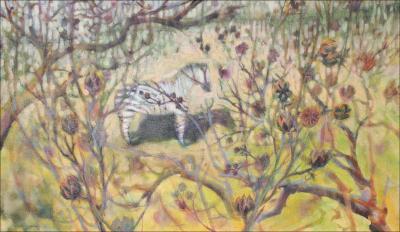
March 20th – 26th: After another few days of remapping, I like the direction it’s taking with the larger Myrtle seed-pods in the foreground…hardly touched the zebra, except before starting today, scrubbed and washed off a lot of the surface and concentrated mainly on re-working the whole composition.
Art in general, no matter what the media, has us confront varying emotions while we work, pleasant and unpleasant. If the piece is taking longer than anticipated, any self-expectations that mount don’t help the progress at all. There are also echos of things other Artists say, like “if it’s taking too long, trash it and start over”. That one always puzzles me – why tell someone to quit? How about searching for all that the work might possibly become? Fear of ruining work that’s already accomplished can hold us back from throwing our whole selves into it, bringing it to a new level.
It seems that so much fuss is made about paintings that are whipped off in a day. While the method of finishing work quickly is great, this is not the ideal for every painter. Most paintings do have a lot of life and zing after only one day of work and sometimes it’s best to leave them that way. Some Art is best left as “pure”, responsive, raw… and some work begs to be analyzed and dissected, perhaps to the death of the piece and having nothing to show for the labor.
Each artist knows if each painting at the end of the day has potential to become something more, and the decision to stay or to search is different with each and every piece. I say don’t give up if a painting takes too long to come to fruition.
March 15th – Freestyle brushstrokes have livened work up a little since the last post. Intentions are for the painting to be more about the Myrtle than the zebra, but the zebra is key to determining the rhythm of the whole composition. The biggest challenge is that the zebra is such a striking subject alone, and competes for importance with the branches. Color is a huge issue also, because the ground is dry and bright during winter, but so is the zebra. This is why I have yellow tones in the ground, and gradually am adding darker values, playing with colors throughout the painting process.
Every aspect is gradually worked through as painting progresses; no definite decisions made until the final day. If/when work finally succeeds, all the stages of color transitions show through in bits and pieces across the canvas, contributing to the final color and depth impressions. It’s really the process of change in a painting that’s most enjoyable and educational. Every stage is photographed or scanned, and the process can be evaluated after it’s finished.
– am finding it hard to maintain a balance of weight on the right and left sides beside such strong tones in that fur…I may add is a couple of unusually large detailed seed-pods in the foreground to take the eyes’ attention away from the zebra at first glance. I keep playing with colors, patterns, brushstrokes, scratching/removal of paint and anything I can think, still aware that the painting needs more depth.
March 10th – striving for an accurate portrayal of Crepe Myrtle branches in winter, and except for a few detailed seed-pods in the foreground, an overall abstract representation more than realism. The zebra is purposely off-center in an attempt to allow more space for the main subject. Establishing the composition is always priority over accurate colors at first, which of course are to be considered but like other details are left until the final day of completion.
Bluebonnet Season
Sunday, March 30th, 2008
Bluebonnets Abstract, 36H x 24W acrylics on canvas, wrapped sides painted, narrow frame.
It’s Bluebonnet Season in Texas again! The Bluebonnets Abstract is not typical of my work, but when studying any subject, it’s liberating and enlightening to try painting it from different perspectives and try many styles.
Eastern Redbuds
Saturday, March 29th, 2008
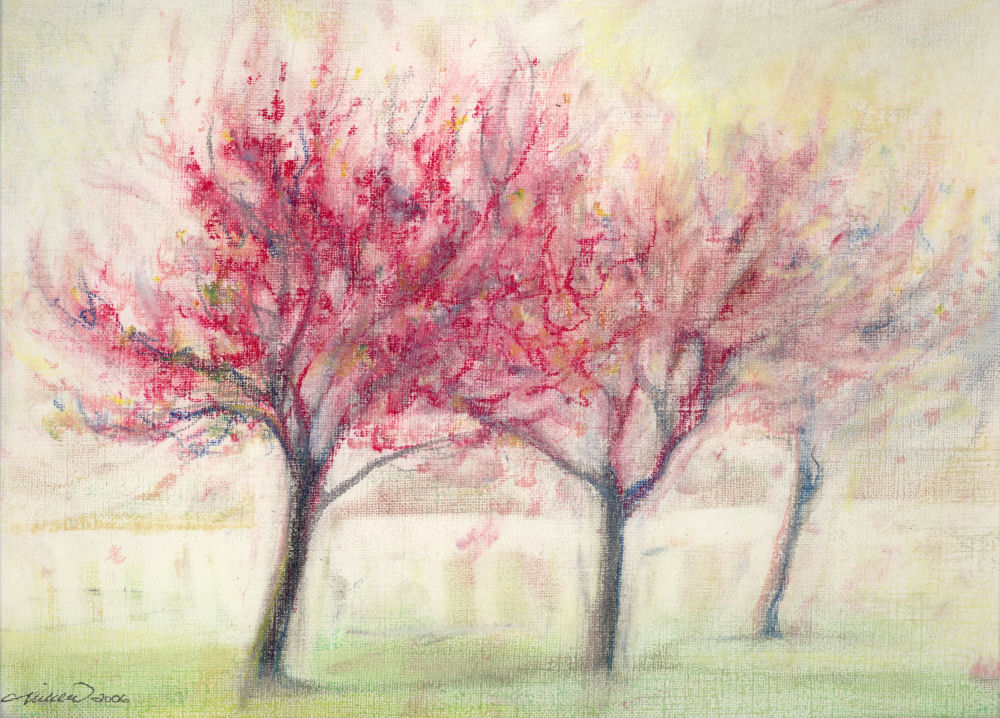
Eastern Redbuds, Coppell, Texas USA, 14 x 11 inches soft pastels on paper.
Showcased in Artjury.com’s 2007 Spring/Summer Online Exhibition.
Emerge
Monday, March 24th, 2008
Above: this morning’s emerging Myrtle leaves, an addition to the Heart Shapes in Nature series.
Upcoming exhibitions:
1. Polypore Fungi is on exhibit at the VAST 40th Annual Spring Exhibition in Denton, Texas April 10 through May 29, 2008. Opening Reception Thursday, April 10th 6:00 – 8:p.m. at the Meadows Gallery 400 E. Hickory, Denton.
2. Firewheels, 18 x 24 x 2 inches Acrylics – Texas and Neighbors Regional Art Exhibition at the Irving Arts Center, 3333 N. MacArthur Blvd., Irving, Texas April 26 through May 24th, 2008. Opening Reception Sunday, April 27th 1:00 – 5:00 p.m.
Beauty and the beast
Saturday, March 15th, 2008
I couldn’t resist buying a deep-yellow Calla Lily at the local nursery, then while out pulling weeds and transplanting it, a large slow-moving beetle called for a portrait.
Mockingbird ritual
Thursday, March 6th, 2008
Mockingbird mating flight ritual – 10 x 10 inches study in graphite, eraser, paper
Last night it was especially noticeable that the Mockingbirds have started their mating season. Pronouncing himself at the highest peak on a rooftop, the male mocks other birds’ calls, repeating each 3-4 times before changing to another call. Then in a ritual flight dance he flies up a short distance and does graceful flip in the air, flashing the white wing stripes, back to the perch and repeats the pattern over and over.
After listening to them quite a bit, there are some that have a larger repertoire of calls and a louder, determined, clearer song…I’m guessing that those are the most mature and attractive.
« Previous Entries Next Entries »

